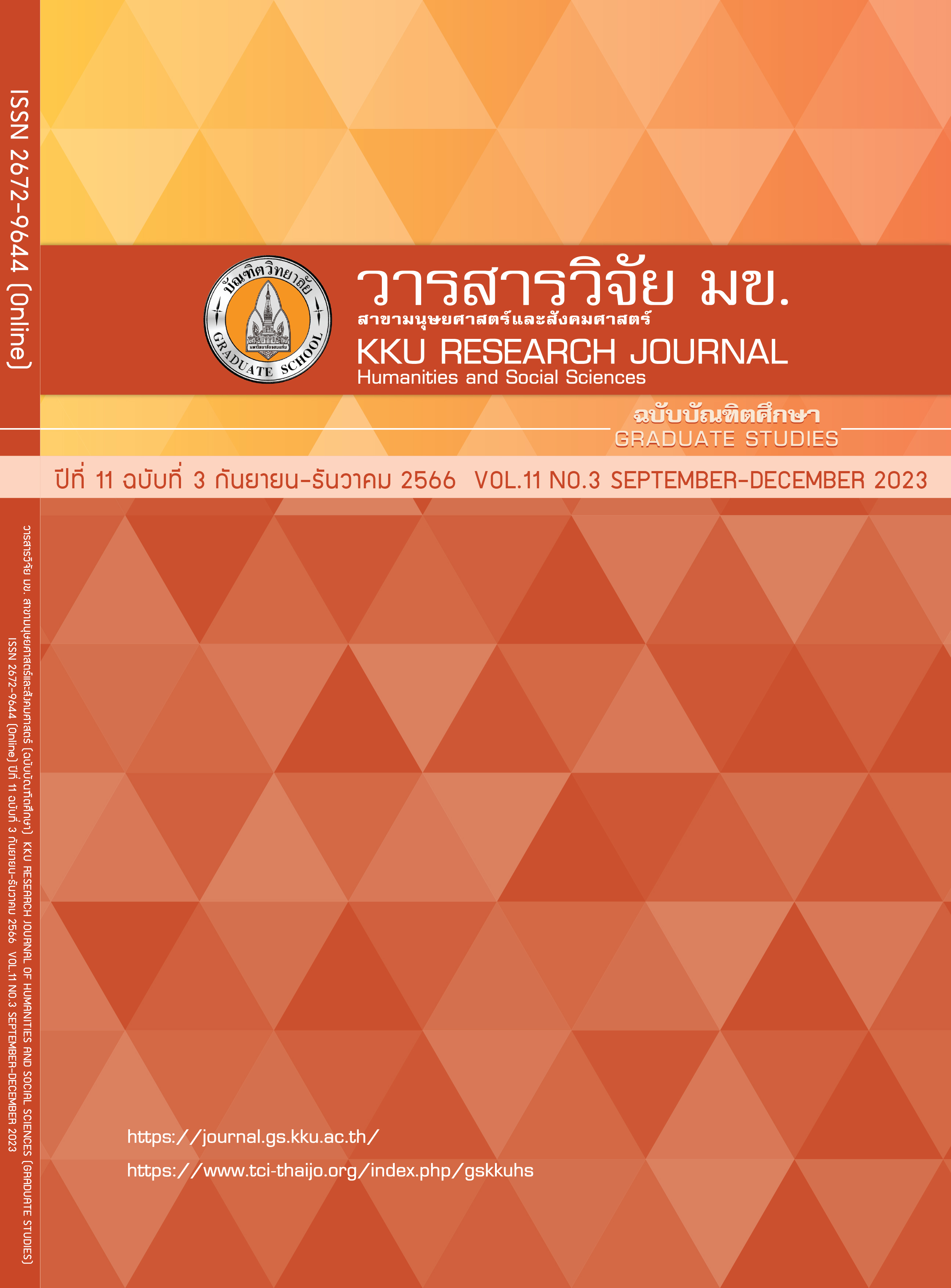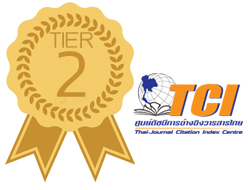A ข้อเสนอเชิงกลยุทธ์ในการพัฒนาภาวะผู้นำแบบคล่องแคล่วในโรงเรียน สังกัดสำนักงานเขตพื้นที่การศึกษาประถมศึกษาชัยภูมิ เขต 2
คำสำคัญ:
ภาวะผู้นำ, ภาวะผู้นำแบบคล่องแคล่ว, ข้อเสนอเชิงกลยุทธ์บทคัดย่อ
การวิจัยครั้งนี้เป็นการวิจัยเชิงนโยบาย (Policy Research) มีวัตถุประสงค์ (1) เพื่อสร้างข้อเสนอเชิงกลยุทธ์ในการพัฒนาภาวะผู้นำแบบคล่องแคล่วในโรงเรียน และ (2) เพื่อตรวจสอบข้อเสนอเชิงกลยุทธ์ในการพัฒนาภาวะผู้นำแบบคล่องแคล่วในโรงเรียน สังกัดสำนักงานเขตพื้นที่การศึกษาประถมศึกษาชัยภูมิ เขต 2 พบว่า ผลการตอบแบบสอบถามสภาพปัจจุบันและสภาพที่พึงประสงค์ของภาวะผู้นำแบบคล่องแคล่ว เมื่อพิจารณาจากดัชนีความต้องการจำเป็นจากมากไปหาน้อย คือ ความคล่องแคล่วด้านผู้มีส่วนได้ส่วนเสีย ความคล่องแคล่วด้านการตัดสินใจ ความคล่องแคล่วด้านการเปลี่ยนแปลง ความคล่องแคล่วด้านตนเอง และความคล่องแคล่วด้านผู้คน ตามลำดับ และผลการสร้างข้อเสนอเชิงกลยุทธ์ในการพัฒนาภาวะผู้นำแบบคล่องแคล่วในโรงเรียน สังกัดสำนักงานเขตพื้นที่การศึกษาประถมศึกษาชัยภูมิ เขต 2 ซึ่งประกอบด้วยวิสัยทัศน์ พันธกิจ เป้าหมาย วัตถุประสงค์ กลยุทธ์ และแนวปฏิบัติตามกรอบแนวคิดของภาวะผู้นำแบบคล่องแคล่ว โดยในภาพรวม ด้านความเหมาะสมอยู่ในระดับมากที่สุด ด้านความเป็นไปได้อยู่ในระดับมากที่สุด และด้านความเป็นประโยชน์อยู่ในระดับมากที่สุด
เอกสารอ้างอิง
United Nations. Policy Brief: Education during COVID-19 and beyond [Internet]. United Nations; 2020 Aug [cited 2023 Sep 20]. Available from: https://www.un.org/development/desa/dspd/wp content/uploads/sites/22/2020/08/sg_policy_brief_covid-19_and_education_august_2020.pdf
UNESCO INSTITUTE FOR STATISTICS. More Than One-Half of Children and Adolescents Are Not Learning Worldwide [Internet]; 2017 [cited 2017 Sep 20] Available from: http://uis.unesco.org /sites/default/files/documents/fs46-more-than-half-children-not-learning-en-2017.pdf
UNESCO. Act now: Reduce the impact of COVID-19 on the cost of achieving SDG 4 [Internet]; 2020 [cited 2023 Sep 20] Available from: https://en.unesco.org/gem-report/COVIDcostSDG4
Horney N, O’Shea T. Focused, Fast and Flexible: Creating Agility Advantage in a VUCA World. Indie Books International; 2015.
Joiner B, Josephs S. Leadership Agility: Five Levels of Mastery for Anticipating and Initiating Change. San Francisco, CA: Joseey-Bass; 2008.
Pat K. Strategies for managing private secondary schools under the concept of developing students to have Agile leadership [Thesis]. Bangkok: Chulalongkorn University; 2018. Thai.
Salza P, Musmarra P, Ferrucci F. Agile Methodologies in Education: A Review; 2018.
Attar M, Abdul-Kareem A. The Role of Agile Leadership in Organisational Agility. Agile Business Leadership Methods for Industry 4.0; 2020.
Joiner B, Josephs S. Developing Agile Leaders. Industrial And Commercial Training. 2007; 39(1): 35-42.
Joiner B. Leadership Agility for Organizational Agility. Journal of Creating Value; 2019.
Agile Cockpit. Competencies of AGILE LEADERS; 2020.
Akkaya B, Yazici A. Comparing Agile Leadership with Biomimicry-Based Gray Wolf: Proposing A New Model. An International Journal. 2020; 8(2): 1455-1478.
Yamane T. Statistics, An Introductory Analysis. 2nd ed. New York: Harper and Row; 1967.
Kanokkan T. Stakeholder Analysis of Autonomous Universities. Journal of Management Ubon Ratchathani University. 2018; 7(13): 88-108. Thai.
McKenzie J, Atiken P. Learning to lead the knowledgeable organization: developing leadership agility. Strategic HR Review. 2012; 11(6): 329-334.
Suwimol W. Research to assess the need for necessity [Thesis]. Bangkok: Chulalongkorn University Press; 2007. Thai.
Nipaporn S. Guidelines for using Agile in the organization for success of a bank [Thesis]. college of management Mahidol University; 2019. Thai.
Pemika R. Transforming the work of government organizations to become an organization that is flexible and ready to change (Agile Organization) Case study of the Revenue Department [Thesis]. Faculty of Political Science, Chulalongkorn University; 2020. Thai.
ดาวน์โหลด
เผยแพร่แล้ว
รูปแบบการอ้างอิง
ฉบับ
ประเภทบทความ
สัญญาอนุญาต

อนุญาตภายใต้เงื่อนไข Creative Commons Attribution-NonCommercial-NoDerivatives 4.0 International License.




